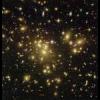Did they use the mice with faulty NNT gene in this study?
As already indicated in the NNT thread, yes: all of their mice — WT, knockout, or transgenic — were NNT mutation-bearing C57Bl/6J mice (see "Experimental Models: Organisms/Strains" in STAR+METHODS.
Strange. I was looking for info on the mice used, and found this chart in the supplementary info.
nad-chart-liver-soleus.jpg
nad-chart-liver-soleus2.jpg
Seems quite significant that after 8 weeks of supplementation, liver NAD looks to be over 5x higher in mice receiving NMN. Soleus looks maybe 50% higher.
Isn't that quite a bit higher than some other studies have shown? What am I missing here?
(Specifically, this is supplementary Fig. S6A). Three possible explanations come to mind:
First, these are older mice than have been used in nearly all other NAD+ precursor studies. You'd certainly expect on first principles that the relative rise in tissue NAD+ in response to precursor would be greater in older than in younger animals, whatever the final absolute level might be — although surprisingly, the UWash pharmacodynamic study PMID 29211728 seems to suggest the opposite.
Second, you are after all comparing results in different studies with different assay methods: here the investigators used an in-house method, which almost by definition is not what other groups have used. You're always on shaky grounds doing direct comparisons between different studies (cf. MikeDC's initial silliness on this front).
And third, they dosed the animals with NMN via drinking water for 2 months at 400 mg/kg/day, starting at age 18 mo. Most other studies are either for much shorter periods (acute, 1 week) or much longer (12 month) periods. Perhaps there was a progressive build-up over the course of 2 mo that is not captured in shorter studies, but the homeostatic feedback seemingly observed in many other studies after longer periods had not yet kicked in.
































 This topic is locked
This topic is locked


















